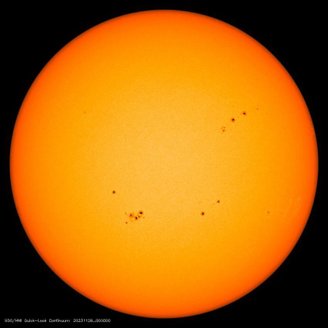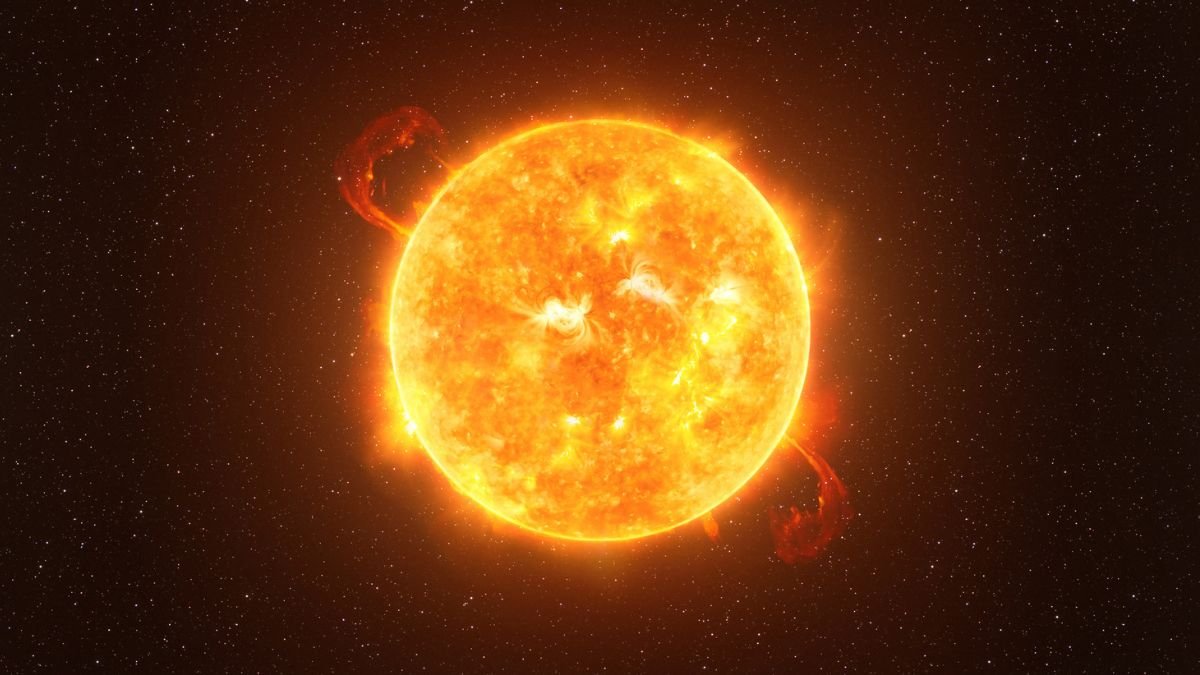A new way to predict peak solar activity required to maintain technology, spaceflight and Earth’s infrastructure was recently proposed by researchers at the Indian Institute of Science Education and Research in Kolkata. According to new research, The maximum intensity of the current solar cycle will occur from the beginning of next year.
The ongoing solar cycle is 25 years old and started in December 2019. These periodic changes in the Sun’s magnetic activity occur over periods of 11 years. marked by changes in the number and size of sunspots, solar flares, and other events on our star.
Predictions were that this would be a relatively weak cycle with a downward trend. However, if the new study is correct, this may change.
How do solar cycles work?
Our Sun is nothing more than a huge sphere of plasma (electrically charged gas). One of the properties of this energetic material is that when a magnetic field passes through it, the plasma moves with it. Similar to Earth’s, this field is a dipole, meaning It has a positive (north) and negative (south) pole, separated by distance, through which equal but opposite charges pass.
At the beginning of the solar cycle, field lines flow from the north pole to the south pole, but as the Sun rotates, the plasma envelops the magnetic field lines. When extended, they cause the magnetic field to rise to the surface, producing sunspots, which are Earth-sized, cooler and apparently darker areas. When these spots disappear, a peak in solar activity occurs.
However, eventually this sunspot area breaks down and explosions or eruptions of the coronal mass occur, ejecting large amounts of particles into space. When they arrive here on Earth, the result is beautiful aurora borealis, but also negative consequences for our satellites, power grids, and telecommunications systems.
What does the new theory of solar activity say?

In 1935, Swiss astronomer Max Waldmeier discovered that the faster the rise rate of the sunspot cycle, the stronger the gravitational pull. This means that stronger cycles will take less time to reach their peak.
However, this relationship, which predicts the strength of the sunspot cycle based on observations of the initial ascension phase, has now been questioned. Rate of decrease in the Sun’s dipole magnetic field, according to IISER Kolkata researchers It is also related to the rate of increase of the continuous sunspot cycle.
Thus, when data on the rate of decrease in the Sun’s dipole magnetic field (Waldmeier rule) are combined with observations of sunspots, the study suggests that: The maximum of the 25th of the solar cycle is expected to occur at the beginning of 2024, with uncertainty lasting until September of the same year.
Stay up to date with the latest scientific studies at TecMundo. If you wish, take the opportunity to find out whether the Sun can turn into a black hole.
Source: Tec Mundo
I’m Blaine Morgan, an experienced journalist and writer with over 8 years of experience in the tech industry. My expertise lies in writing about technology news and trends, covering everything from cutting-edge gadgets to emerging software developments. I’ve written for several leading publications including Gadget Onus where I am an author.













